#The Eiffel Tower is a wrought-iron lattice tower on the Champ de Mars in Paris France. It is named after the engineer Gustave Eiffel wh
Text


Jacob Elordi and Barry Keoghan working out together in LA
#The Eiffel Tower is a wrought-iron lattice tower on the Champ de Mars in Paris France. It is named after the engineer Gustave Eiffel wh#jacob elordi#barry keoghan
259 notes
·
View notes
Text

Eiffel Tower, Paris, France: Imagine yourself exploring the streets of Paris, surrounded by the hustle and bustle of city life. As you navigate through the winding alleys and grand boulevards, you'll encounter numbers everywhere you look. animated... The Eiffel Tower is a wrought-iron lattice tower on the Champ de Mars in Paris, France. Wikipedia
163 notes
·
View notes
Text
Eiffel Tower
Eiffel Tower
Eiffel Tower is located on the Champ de Mars in Paris, France. The tower is the tallest building in Paris standing at 330 metres (1,083 feet), or roughly the height of an 81-story skyscraper. With a side length of 125 metres (410 feet), its foundation is square in shape.
The Eiffel Tower is a lattice tower made of wrought iron. It bears the name Gustave Eiffel in honour of the…

View On WordPress
#about eiffel tower#alfer tower#an eiffel tower#balzac eiffel tower#best eiffel tower tour#best way to see the eiffel tower#best way to visit eiffel tower#chabe chauffeur paris#chauffeur aéroport paris#chauffeur cdg paris#chauffeur driven car paris#chauffeur london to paris#chauffeur paris france#chauffeur prive fr#chauffeur service in paris france#eiffel eiffel tower#eiffel tours#eiffel tower#eiffel tower activities#eiffel tower attractions#eiffel tower carousel#eiffel tower city#eiffel tower experience#eiffel tower is located#eiffel tower is located in#eiffel tower night tour#eiffel tower place#eiffel tower reservations#eiffel tower sculpture#eiffel tower souvenirs
1 note
·
View note
Text

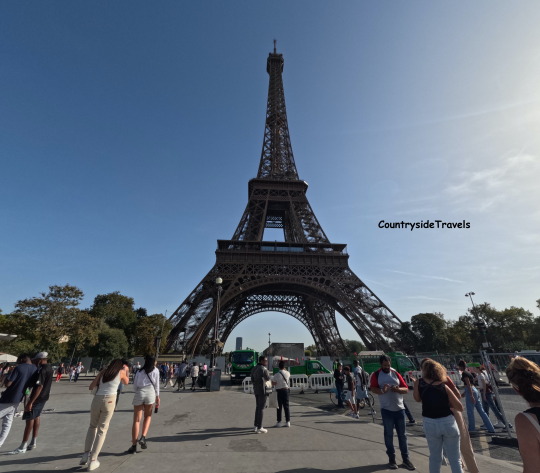
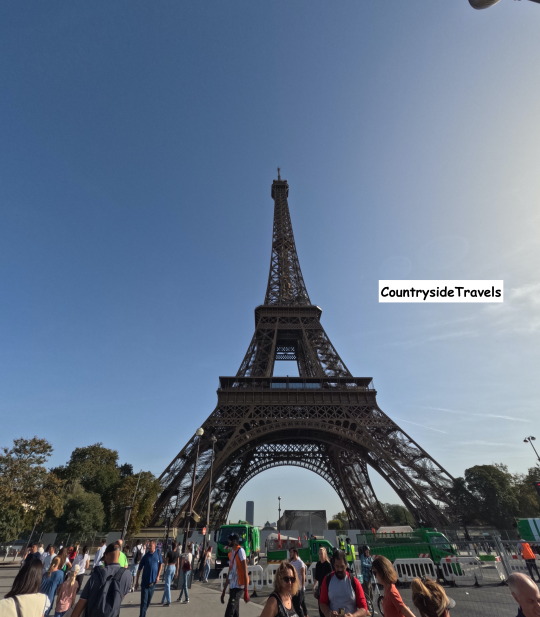
Paris, the fashion capital. The Eiffel Tower is a wrought-iron lattice tower on the Champ de Mars in Paris, France. It is named after the engineer Gustave Eiffel, whose company designed and built the tower from 1887 to 1889.
0 notes
Photo

#lego #legoarchitecture @legoarchitecturemoc @lego @effile_tower #effiletower The Eiffel Tower (/ˈaɪfəl/ EYE-fəl; French: tour Eiffel [tuʁ ɛfɛl] (listen)) is a wrought-iron lattice tower on the Champ de Mars in Paris, France. It is named after the engineer Gustave Eiffel, whose company designed and built the tower. Locally nicknamed "La dame de fer" (French for "Iron Lady"), it was constructed from 1887 to 1889 as the centerpiece of the 1889 World's Fair. Although initially criticised by some of France's leading artists and intellectuals for its design, it has since become a global cultural icon of France and one of the most recognisable structures in the world. The Eiffel Tower is the most visited monument with an entrance fee in the world: 6.91 million people ascended it in 2015. It was designated a monument historique in 1964, and was named part of a UNESCO World Heritage Site ("Paris, Banks of the Seine") in 1991. (at Effiel tower) https://www.instagram.com/p/CpiuerXvNQC/?igshid=NGJjMDIxMWI=
0 notes
Photo
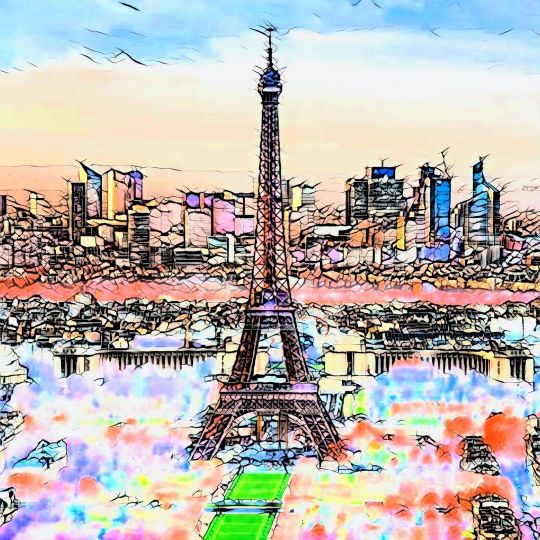
The Iron Lady (Eiffel Tower) Prints and Merchandise Available on Redbud: https://www.redbubble.com/shop/ap/138670758?ref=studio-promote Digital Paris France Collection NFT's Available on OpenSea https://opensea.io/olusioner The Eiffel Tower is a wrought-iron lattice tower on the Champ de Mars in Paris, France. It is named after the engineer Gustave Eiffel, whose company designed and built the tower. Locally nicknamed "La dame de fer" (French for "Iron Lady"), it was constructed from 1887 to 1889 as the centerpiece of the 1889 World's Fair. Although initially criticized by some of France's leading artists and intellectuals for its design, it has since become a global cultural icon of France and one of the most recognisable structures in the world. #nft #digitalart #redbubble #paris #france #travel #parisjetaime #parisfrance #europe #parisianstyle #EIffelTower #CityofLove #InstaParis #Mary #ParisianScenes #TravelFever #PicOfTheDay #MyTravelMemories #GlobalTraveler #BeautifulDestinations #photography #beautiful #picoftheday #photooftheday #instadaily #aesthetic #artoftheday #mosaic #gold #painting (at Paris, France) https://www.instagram.com/p/CoFPEhwuVWi/?igshid=NGJjMDIxMWI=
#nft#digitalart#redbubble#paris#france#travel#parisjetaime#parisfrance#europe#parisianstyle#eiffeltower#cityoflove#instaparis#mary#parisianscenes#travelfever#picoftheday#mytravelmemories#globaltraveler#beautifuldestinations#photography#beautiful#photooftheday#instadaily#aesthetic#artoftheday#mosaic#gold#painting
0 notes
Photo
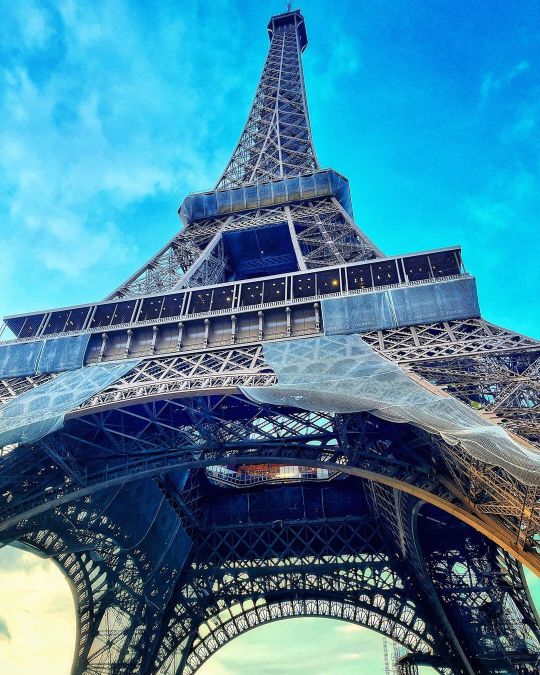
The Eiffel Tower is a wrought-iron lattice tower on the Champ de Mars in Paris, France. It is named after the engineer Gustave Eiffel, whose company designed and built the tower. Locally nicknamed "La dame de fer", it was constructed from 1887 to 1889 as the centerpiece of the 1889 World's Fair ❤️🇫🇷 . . . . . . . . . #ig_naturelovers #igtravel #europe_photogroup #ig_paris #ig_europa #parisexplore #visitparis #visiteurope #parisdiaries #fotografie #mobilephotography #mobilegraphy #girlstravelglobal #girlwhotravels #girlswanttotravel #awesome_earthpix #amateursalbum #hobbyfotografie #mypixeldiary #ig_photography #france🇫🇷 #france #ig_fotografdiyari #paris #girlstraveler #photographylovers #travelblogger #world_heritages_ #photography #triptocommunity 📸 (at Eiffel Tower, Paris, France) https://www.instagram.com/p/Cnoe4QzIdw7/?igshid=NGJjMDIxMWI=
#ig_naturelovers#igtravel#europe_photogroup#ig_paris#ig_europa#parisexplore#visitparis#visiteurope#parisdiaries#fotografie#mobilephotography#mobilegraphy#girlstravelglobal#girlwhotravels#girlswanttotravel#awesome_earthpix#amateursalbum#hobbyfotografie#mypixeldiary#ig_photography#france🇫🇷#france#ig_fotografdiyari#paris#girlstraveler#photographylovers#travelblogger#world_heritages_#photography#triptocommunity
0 notes
Photo

The Eiffel Tower, Paris France The Eiffel Tower (tour Eiffel) is a wrought-iron lattice tower on the Champ de Mars in Paris, France. It is named after the engineer Gustave Eiffel, whose company designed and built the tower. Locally nicknamed "La dame de fer" (French for "Iron Lady"), it was constructed from 1887 to 1889 as the centerpiece of the 1889 World's Fair. Although initially criticised by some of France's leading artists and intellectuals for its design, it has since become a global cultural icon of France and one of the most recognisable structures in the world. The Eiffel Tower is the most visited monument with an entrance fee in the world: 6.91 million people ascended it in 2015. It was designated a monument historique in 1964, and was named part of a UNESCO World Heritage Site ("Paris, Banks of the Seine") in 1991. #eiffel #travelgram #travel #architecture #photooftheday #street #photo #cityphotography #streetphotography #torreeiffel #paris #travelphotography #citylife #picoftheday #instagram #cityscape #eiffeltower #france #toureiffel #parisjetaime #ladamedefer #champdemars #parisfrance #parismonamour #visitparis #architecture #parisianlife #parismaville #instaparis #visitfrance #topparisphoto (at Eifel Tower, Paris, France) https://www.instagram.com/p/CmXEurHIqfy/?igshid=NGJjMDIxMWI=
#eiffel#travelgram#travel#architecture#photooftheday#street#photo#cityphotography#streetphotography#torreeiffel#paris#travelphotography#citylife#picoftheday#instagram#cityscape#eiffeltower#france#toureiffel#parisjetaime#ladamedefer#champdemars#parisfrance#parismonamour#visitparis#parisianlife#parismaville#instaparis#visitfrance#topparisphoto
0 notes
Text
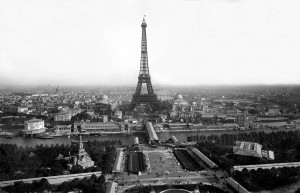
https://historyonthisday.com/events/architecture/eiffel-tower-construction/
Today on January 28, 1887, construction begins on the Eiffel Tower, one of the world's most recognizable structures.The Eiffel Tower was named after its master engineer, Gustave Eiffel, whose company designed and built this iconic structure. Situated on Champ de Mars, the massive wrought iron lattice tower dominates the French capital city. At the time, many of the country's leading intellectuals and architects criticized the Tower for its lifeless design. However, it has since become one of the most famous and recognizable architectural icons of the world. Today, it is a leading tourist attraction in France and the most-visited paid monument in the world. The Eiffel Tower reaches an impressive height of 324 meters. As of 2020, it remains the tallest structure in Paris. Once completed in 1889, it officially surpassed the Washington Monument to become the world's tallest structure. It held that title for 41 years before being surpassed by New York's Chrysler Building in 1930.The Eiffel Tower was commissioned to be the centerpiece of the 1889 World Fair held in Paris. Marking the centennial anniversary of the French Revolution, it was a particularly special celebration for the French people. Interestingly, city planners did not originally intend for the Tower to be a permanent fixture. But instead, city planners planned to dismantle the structure ten years after the expo. More than fifty engineers and architects designed and supervised its construction. The Levallois-Perret metal factory employed over 150 workers to manufacture the Tower's 18,038 metallic parts. At any given time, there between 150 to 300 builders on-site assembling the Eiffel Tower. The construction period lasted a total of two years, two months, and five days.City officials never followed through with dismantling the Eiffel Tower after it's top was outfitted with several antennas. These antennas proved critical for transmitting wireless signals and broadcasts around the world. In 1940, the Nazis rapidly invaded France and captured Paris. Prior to their arrival, local Parisians secretly cut the Tower's elevator cables, forcing Hitler and his entourage to climb the stairs. The Eiffel Tower was initially designed for Barcelona, but city planners later rejected the idea. In 2007, a woman named Erika apparently married the Tower. Today, there are more than thirty replicas of the Eiffel Tower around the world, with seven million people ascending the real Tower every year.
0 notes
Photo
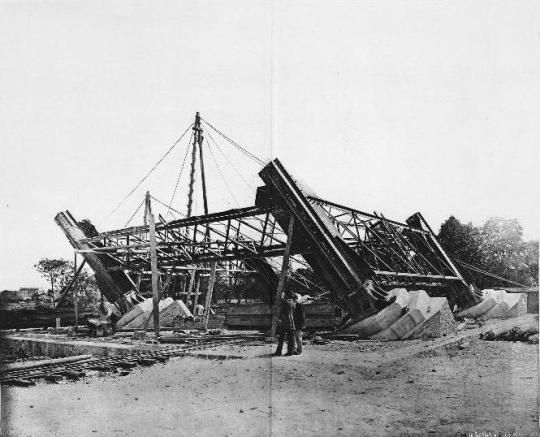


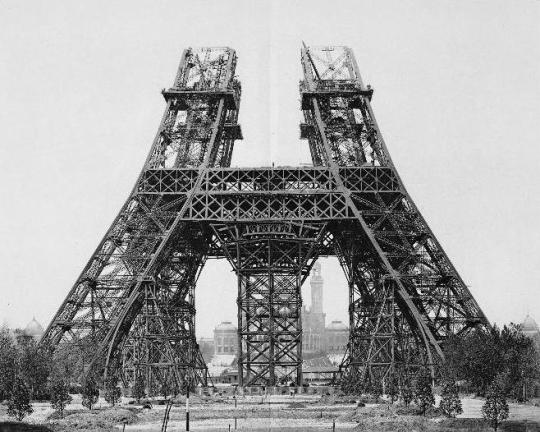
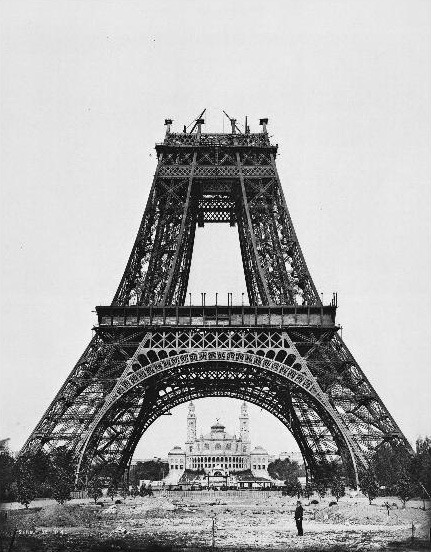
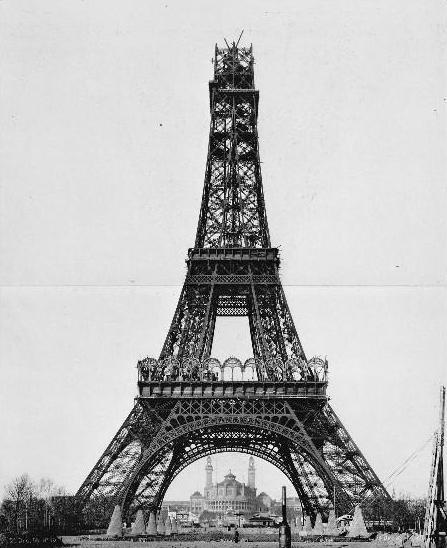

March 31, 1889 – The Eiffel Tower is officially opened.
The Eiffel Tower is a wrought-iron lattice tower on the Champ de Mars in Paris, France. It is named after the engineer Gustave Eiffel, whose company designed and built the tower.
Locally nicknamed "La dame de fer" (French for "Iron Lady"), it was constructed from 1887 to 1889 as the entrance to the 1889 World's Fair and was initially criticised by some of France's leading artists and intellectuals for its design, but it has become a global cultural icon of France and one of the most recognisable structures in the world. The Eiffel Tower is the most-visited paid monument in the world; 6.91 million people ascended it in 2015.
The tower is 324 metres (1,063 ft) tall, about the same height as an 81-storey building, and the tallest structure in Paris. Its base is square, measuring 125 metres (410 ft) on each side. During its construction, the Eiffel Tower surpassed the Washington Monument to become the tallest man-made structure in the world, a title it held for 41 years until the Chrysler Building in New York City was finished in 1930. It was the first structure in the world to surpass both the 200 meter and 300 meter mark in height. Due to the addition of a broadcasting aerial at the top of the tower in 1957, it is now taller than the Chrysler Building by 5.2 metres (17 ft). Excluding transmitters, the Eiffel Tower is the second tallest free-standing structure in France after the Millau Viaduct.
The tower has three levels for visitors, with restaurants on the first and second levels. The top level's upper platform is 276 m (906 ft) above the ground – the highest observation deck accessible to the public in the European Union. Tickets can be purchased to ascend by stairs or lift to the first and second levels. The climb from ground level to the first level is over 300 steps, as is the climb from the first level to the second. Although there is a staircase to the top level, it is usually accessible only by lift.
The main structural work was completed at the end of March 1889 and, on 31 March, Eiffel celebrated by leading a group of government officials, accompanied by representatives of the press, to the top of the tower. Because the lifts were not yet in operation, the ascent was made by foot, and took over an hour, with Eiffel stopping frequently to explain various features. Most of the party chose to stop at the lower levels, but a few, including the structural engineer, Émile Nouguier, the head of construction, Jean Compagnon, the President of the City Council, and reporters from Le Figaro and Le Monde Illustré, completed the ascent. At 2:35 pm, Eiffel hoisted a large Tricolour to the accompaniment of a 25-gun salute fired at the first level.
There was still work to be done, particularly on the lifts and facilities, and the tower was not opened to the public until nine days after the opening of the exposition on 6 May; even then, the lifts had not been completed. The tower was an instant success with the public, and nearly 30,000 visitors made the 1,710-step climb to the top before the lifts entered service on 26 May. Tickets cost 2 francs for the first level, 3 for the second, and 5 for the top, with half-price admission on Sundays, and by the end of the exhibition there had been 1,896,987 visitors.
After dark, the tower was lit by hundreds of gas lamps, and a beacon sent out three beams of red, white and blue light. Two searchlights mounted on a circular rail were used to illuminate various buildings of the exposition. The daily opening and closing of the exposition were announced by a cannon at the top.
On the second level, the French newspaper Le Figaro had an office and a printing press, where a special souvenir edition, Le Figaro de la Tour, was made. There was also a pâtisserie.
At the top, there was a post office where visitors could send letters and postcards as a memento of their visit. Graffitists were also catered for: sheets of paper were mounted on the walls each day for visitors to record their impressions of the tower. Gustave Eiffel described some of the responses as vraiment curieuse ("truly curious").
Famous visitors to the tower included the Prince of Wales, Sarah Bernhardt, "Buffalo Bill" Cody (his Wild West show was an attraction at the exposition) and Thomas Edison. Eiffel invited Edison to his private apartment at the top of the tower, where Edison presented him with one of his phonographs, a new invention and one of the many highlights of the exposition. Edison signed the guestbook with this message:
“To M Eiffel the Engineer the brave builder of so gigantic and original specimen of modern Engineering from one who has the greatest respect and admiration for all Engineers including the Great Engineer the Bon Dieu, Thomas Edison.”
Eiffel had a permit for the tower to stand for 20 years. It was to be dismantled in 1909, when its ownership would revert to the City of Paris. The City had planned to tear it down (part of the original contest rules for designing a tower was that it should be easy to dismantle) but as the tower proved to be valuable for communication purposes, it was allowed to remain after the expiry of the permit.
Eiffel made use of his apartment at the top of the tower to carry out meteorological observations, and also used the tower to perform experiments on the action of air resistance on falling bodies.
More than 250 million people have visited the tower since it was completed in 1889. In 2015, there were 6.91 million visitors. The tower is the most-visited paid monument in the world. An average of 25,000 people ascend the tower every day which can result in long queues.
Daily inspiration. Discover more photos at http://justforbooks.tumblr.com
119 notes
·
View notes
Text

Avan Jogia on his Instagram story (with his brother Ketan)
#The Eiffel Tower is a wrought-iron lattice tower on the Champ de Mars in Paris France. It is named after the engineer Gustave Eiffel whose#Avan Jogia#Ketan Jogia
54 notes
·
View notes
Text

Eiffel Tower Reflection: The Eiffel Tower is a wrought-iron lattice tower on the Champ de Mars in Paris, France. It is named after the engineer Gustave Eiffel, whose company designed and built the tower from 1887 to 1889. Wikipedia
217 notes
·
View notes
Photo

The Eiffel Tower is one of the iconic landmarks & well-known wrought-iron lattice tower in the world, located in Champ de Mars in Paris, France. It was built between 1887 and 1889, for the 100th year of the French Revolution. The tower is 1,063 ft tall, approximately the equal height of an 81-storey building and it is 328 feet wide at its base.
#eiffeltower#paris#france#toureiffel#eiffel#travel#europe#love#tower#french#beautiful#lifelonglearner#lifelonglearners#travelling#trip#FrenchRevolution#landmark#architecture#landmarks#tall#tallest#structure#history#StephenSauvestre#GustaveEiffel
12 notes
·
View notes
Quote
Cheap Flights to Paris
Paris is the capital and most populous city of France, with a population of 2,148,271 residents in an area of 105 square kilometers (41 square miles). Since the 17th century, Paris has been one of Europe's major centers of finance, diplomacy, commerce, fashion, science, and the arts. The City of Paris is the center and seat of government of the Île-de-France, or Paris Region, which has an estimated official 2020 population of 12,278,210, or about 18 percent of the population of France. The Paris Region had a GDP of €709 billion ($808 billion) in 2017. According to the Economist Intelligence Unit Worldwide Cost of Living Survey in 2018, Paris was the second most expensive city in the world, after Singapore, and ahead of Zürich, Hong Kong, Oslo, and Geneva. Another source ranked Paris as most expensive, on a par with Singapore and Hong Kong, in 2018
If you are planning a trip to France and want to find flights to Paris, log onto antigotravel.com and find the most affordable and Cheap Flights to Paris. The website offers a user-friendly and comprehensive platform for you to easily navigate and select what you are looking for, making the entire experience extremely memorable.
Cheap Flights to Paris
Paris is, without a doubt, one of the most popular destinations on the planet – but, you don’t need to dig too deep to pay for your flights to the French capital. You can be enjoying the wide, tree-lined avenues, grand architecture, world-class museums, art galleries, opera, theatre, cafes and fashion boutiques after bagging a cheap flight from Antigotravel.com. Let’s show you how.
How to Find the Best Flight Deals for Paris
It’s not just the time of year, however, that can help you find the best deals on Flights to Paris. Sometimes it’s down to the tactics you use for searching, and here are some to try out right now.
For those not restricted to set days, cheaper flights can be found by using our ‘Show Flexible Dates’ feature. This appears just above where your flight options are returned – and it lets you see exactly when the cheapest tickets to Paris are near your preferred dates.
Airlines offering flights to Paris include:
Air France
British Airways
Ryanair
Vueling
easyJet
Flybe
CityJet
SAS
Emirates
Lufthansa
KLM
Best Places To Visit In Paris For A Dreamy Vacation In 2020!
Eiffel Tower
The Eiffel Tower is a wrought iron lattice tower on the Champ de Mars in Paris, France. It is named after the engineer Gustave Eiffel, whose company designed and built the tower. Constructed from 1887 to 1889 as the entrance to the 1889 World's Fair, it was initially criticized by some of France's leading artists and intellectuals for its design, but it has become a global cultural icon of France and one of the most recognizable structures in the world. The Eiffel Tower is the most-visited paid monument in the world; 6.91 million people ascended it in 2015.
The Louvre Museum
The Louvre Museum is the world's largest art museum and a historic monument in Paris, France. A central landmark of the city, it is located on the Right Bank of the Seine in the city's 1st arrondissement. Approximately 38,000 objects from prehistory to the 21st century are exhibited over an area of 72,735 square meters (782,910 square feet). In 2019, the Louvre received 9.6 million visitors.
Notre-Dame de Paris
Notre-Dame de Paris is a medieval Catholic cathedral on the Île de la Cité in the 4th arrondissement of Paris. The cathedral was consecrated to the Virgin Mary and considered to be one of the finest examples of French Gothic architecture. Its pioneering use of the rib vault and flying buttress, its enormous and colorful rose windows, as well as the naturalism and abundance of its sculptural decoration set it apart from the earlier Romanesque style. Major components that make Notre Dame stand out include one of the world's largest organs and its immense church bells.
Avenue des Champs-Élysées
The Avenue des Champs-Élysées is an avenue in the 8th arrondissement of Paris, France, 1.9 kilometers (1.2 mi) long and 70 metres (230 ft) wide, running between the Place de la Concorde and the Place Charles de Gaulle, where the Arc de Triomphe is located. It is known for its theatres, cafés, and luxury shops, for the annual Bastille Day military parade, and as the finish of the Tour de France cycle race.
Musée d'Orsay
The Musée d'Orsay is a museum in Paris, France, on the Left Bank of the Seine. It is housed in the former Gare d'Orsay, a Beaux-Arts railway station built between 1898 and 1900. The museum holds mainly French art dating from 1848 to 1914, including paintings, sculptures, furniture, and photography. It houses the largest collection of impressionist and post-Impressionist masterpieces in the world, by painters including Monet, Manet, Degas, Renoir, Cézanne, Seurat, Sisley, Gauguin, and Van Gogh. Many of these works were held at the Galerie Nationale du Jeu de Paume prior to the museum's opening in 1986. It is one of the largest art museums in Europe. Musée d'Orsay had 3.177 million visitors in 2017.
Palais Garnier
The Palais Garnier is a 1,979-seat opera house at the Place de l'Opéra in the 9th arrondissement of Paris, France. It was built for the Paris Opera from 1861 to 1875 at the behest of Emperor Napoleon III. Initially referred to as "le Nouvel Opéra de Paris" (the new Paris Opera), it soon became known as the Palais Garnier, "in acknowledgment of its extraordinary opulence" and the architect Charles Garnier's plans and designs, which are representative of the Napoleon III style. It was the primary theatre of the Paris Opera and its associated Paris Opera Ballet until 1989, when a new opera house, the Opéra Bastille, opened at the Place de la Bastille.
Place de la Concorde
The Place de la Concorde is one of the major public squares in Paris, France. Measuring 7.6 ha (19 acres) in area, it is the largest square in the French capital. It is located in the city's eighth arrondissement, at the eastern end of the Champs-Élysées. It was the site of many notable public executions during the French Revolution.
Arc de Triomphe
The Arc de Triomphe de l'Étoile is one of the most famous monuments in Paris, France, standing at the western end of the Champs-Élysées at the center of Place Charles de Gaulle, formerly named Place de l'Étoile—the étoile or "star" of the juncture formed by its twelve radiating avenues. The location of the arc and the plaza is shared between three arrondissements, 16th (south and west), 17th (north) and 8th (east). The Arc de Triomphe honors those who fought and died for France in the French Revolutionary and Napoleonic Wars, with the names of all French victories and generals inscribed on its inner and outer surfaces. Beneath its vault lies the Tomb of the Unknown Soldier from World War I.
Climate of Paris
The Climate of Paris and the region of Île-de-France is temperate and influenced by the Atlantic Ocean: it is quite cold but not freezing in winter and pleasantly warm in summer. However, it has some continental characteristics too, so it can sometimes be very cold in winter and hot in summer.
In winter, from December to February, the average temperatures are quite low: normally, the maximum temperatures are around 7/8 °C (45/46 °F).
When Atlantic currents prevail, the temperature can become mild and can even reach 13/14 °C (55/57 °F), but the weather in these cases is cloudy and rainy; in these periods, the wind blows frequently, and sometimes can be strong. On the other hand, there can be cold periods due to north or north-east currents, which are able to lower the temperature to the freezing point (0 °C or 32 °F) or a few degrees above; in these situations, the feeling of cold can be exacerbated by the wind, which blows moderate, usually from the northeast. The coldest periods occur under the influence of cold air masses from Russia, which can lead to a few days of snow, generally not abundant, and frost. In Paris, the temperature rarely drops to around -10 °C (14 °F), though this may happen on colder winters: in January 1985, the temperature dropped to -18 °C (0 °F).
Summer, from June to August, is a pleasantly warm season: the days are very long, and the temperature generally lends itself to outdoor activities. However, the weather is variable: there are some cool and rainy days due to Atlantic fronts, when the maximum temperature remains below 20 °C (68 °F), while on other occasions, the Azores High can bring some hot and sunny days, maybe a little sultry, with highs around or even above 30 °C (86 °F); in these cases, some thunderstorms can erupt in the afternoon.
Really hot days in Paris are quite rare, though sometimes they may occur because of hot air masses from Africa: in August 2012, the temperature reached 38 °C (100 °F), while in August 2003, which, however, has been exceptional in the whole of France, it reached 40 °C (104 °F).
Spring and Autumn are cool and unstable, characterized by the passage of Atlantic depressions and by temperature changes. In spring, from March to May, the return of cold weather is possible, with short snowfalls in March and sometimes even in April. Sometimes, it's cold still in early May, with highs around 10 °C (50 °F), while in the course of the month, the temperature can reach and even exceed 25 °C (77 °F). Autumn, from September to November, is characterized by a gradual increase of cloudy and rainy periods; usually, it gets cold by November or late October.
1 note
·
View note
Text
The Eiffel Tower
The Eiffel Tower is a wrought-iron lattice tower on the Champ de Mars in Paris, France. It is named after the engineer Gustave Eiffel, whose company designed and built the tower.
Finally the glimpse ... on a rainy day ...
0 notes
Text
Blog 18, Jan 22: the question concerning Tectonic. Tectonic in architecture refers to the science or art of construction, both in relation to use and artistic design. It is the activity that raises building to an art form. With this definition in mind, select your favorite structure on this trip so far and discuss its tectonic.
Tectonic Architecture: The science or art of construction, both in relation to use and artistic design. The activity that raises building to an art form. While we have seen many structures I believe this definition is applicable to, the structure I am selecting for my final post is the Eiffel Tower, located in Paris, France. While we did not get to tour this structure as a class, I made my way over to the structure and was in absolute awe of its construction and beauty.
Built by architects Stephen Sauvstre, Maurice Koechlin and Émile Nougier on January 28, 1887, the Eiffel Tower stands in Champ de Mars in Paris, France. The Eiffel Tower is named after engineer Gustave Eiffle whose organization designed the tower that still stands today and remains one of the largest tourist attractions worldwide. The Eiffel Tower was built during the time when the French government was organizing the International Exposition of 1889 to “celebrate the French Revolution, a competition was held for designs for a suitable monument. [...] more than 100 plans were submitted, and the Centennial Committee Chose that of the noted bridge engineer Gustave Effiel. When completed the Eiffel Tower served as the entrance gateway to the exposition” (Britannica.com). While the Eiffel Tower was initially built to serve as the point of entrance to the exposition, it truly is a testament to Industrial French Ingenuity. Since its construction in 1887, the Eficle Tower has come to represent the “distinct character of the city of Paris.” Below is an image of a sketch of the Eiffle Tower and its scientific nature.
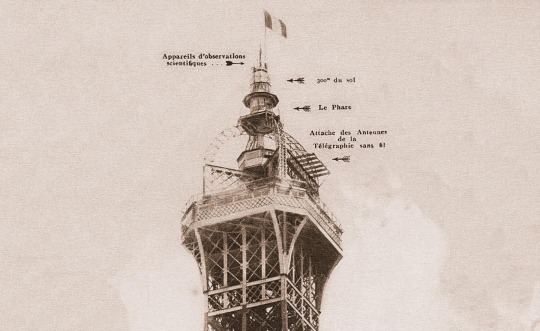
In terms of the material of this tectonic structure, it is almost entirely made of open-lattice wrought iron. According to Brittanica.com, “Gustave Eiffel used his advanced knowledge of the behavior of metal arch and metal truss forms under loading to design a light and airy, but strong structure that presafed a revolution in civil engineering and architectural design.” This tectonic landmark and technological masterpiece welcomes roughly 7 million visitors each year, where roughly 75% are foreigners. These statistics make the tectonic Eiffel Tower the most visited monument you have to pay to visit in the world. In addition, according to TourEiffel.Paris, “The Eiffel Tower was used as a laboratory of measurements and scientific experiments. Considerable scientific apparatus was installed -- barometers, anemometers, lightning conductors, etc…) Moreover, Gustave Eiffel set himself an office asideon the third floor to make astronomical and physiological observations.” This quote directly highlights the scientific nature of this tectonic structure.
Furthermore, Britannica.com writes, “the Eiffel Tower stands on four lattice-girder piers that taper inward to join to form a single large vertical tower. As they curve inward, the piers are connected to each other by networks of girders at two levels that afford viewing platforms for tourists. By contrast, the four semicircular arches at the tower’s base are purely aesthetic elements that serve no structural function.” This quote reveals that there are structural elements that compose the Eiffel Tower are durable and strategic -- representative of the science of architecture -- but there are also aesthetically pleasing design elements that contribute to the structure serving as a form of art.
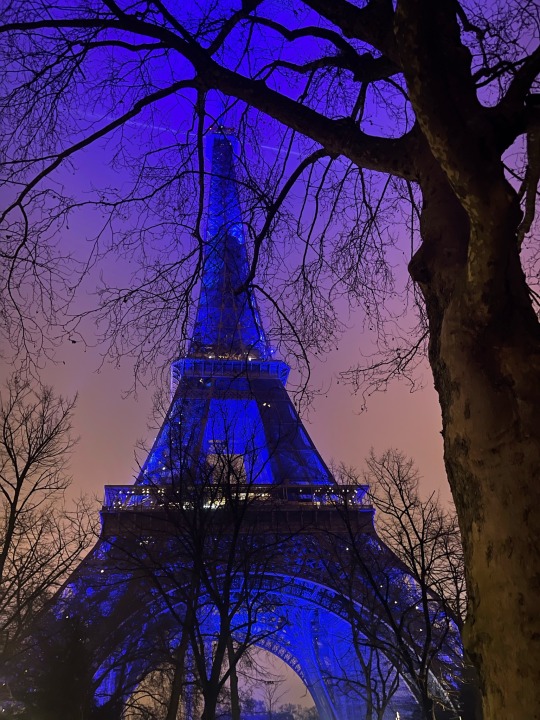
0 notes